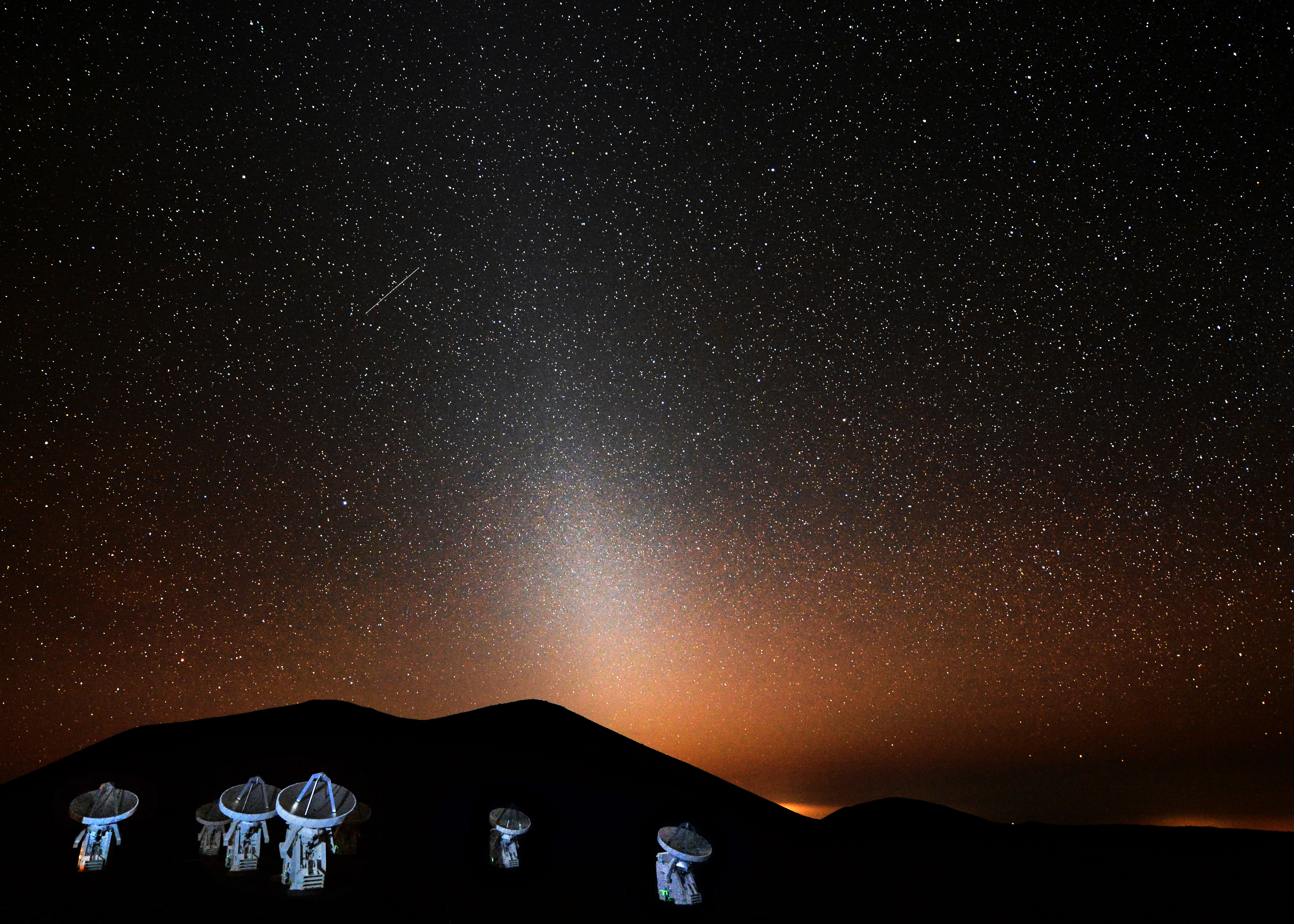|
Zodiacal Cloud
The interplanetary dust cloud, or zodiacal cloud (as the source of the zodiacal light), consists of cosmic dust (small dust, particles floating in outer space) that pervades the space between planets within planetary systems, such as the Solar System. This system of particles has been studied for many years in order to understand its nature, origin, and relationship to larger bodies. There are several methods to obtain space dust measurement. In the Solar System, the interplanetary dust particles have a role in light scattering by particles, scattering sunlight and in emitting thermal radiation, which is the most prominent feature of the night sky's radiation, with wavelengths ranging 5–50 micrometre, μm. The particle sizes of grains characterizing the infrared emission near Earth's orbit typically range 10–100 μm. Microscopic impact craters on lunar rocks returned by the Apollo Program revealed the size distribution of cosmic dust particles bombarding the lunar surface. T ... [...More Info...] [...Related Items...] OR: [Wikipedia] [Google] [Baidu] |
Zodiacal Light
The zodiacal light (also called false dawn when seen before sunrise) is a faint glow of diffuse sunlight scattered by interplanetary dust. Brighter around the Sun, it appears in a particularly dark night sky to extend from the Sun's direction in a roughly triangular shape along the zodiac, and appears with less intensity and visibility along the whole ecliptic as the zodiacal band. Zodiacal light spans the entire sky and contributes to the natural light of a clear and moonless night sky. A related phenomenon is ''gegenschein'' (or ''counterglow''), sunlight backscattered from the interplanetary dust, appearing directly opposite to the Sun as a faint but slightly brighter oval glow. Zodiacal light is very faint, often outshined and rendered invisible by moonlight or light pollution. The interplanetary dust in the Solar System forms a thick, pancake-shaped cloud called the zodiacal cloud which straddles the ecliptic plane. The particle sizes range from 10 to 300 microme ... [...More Info...] [...Related Items...] OR: [Wikipedia] [Google] [Baidu] |

